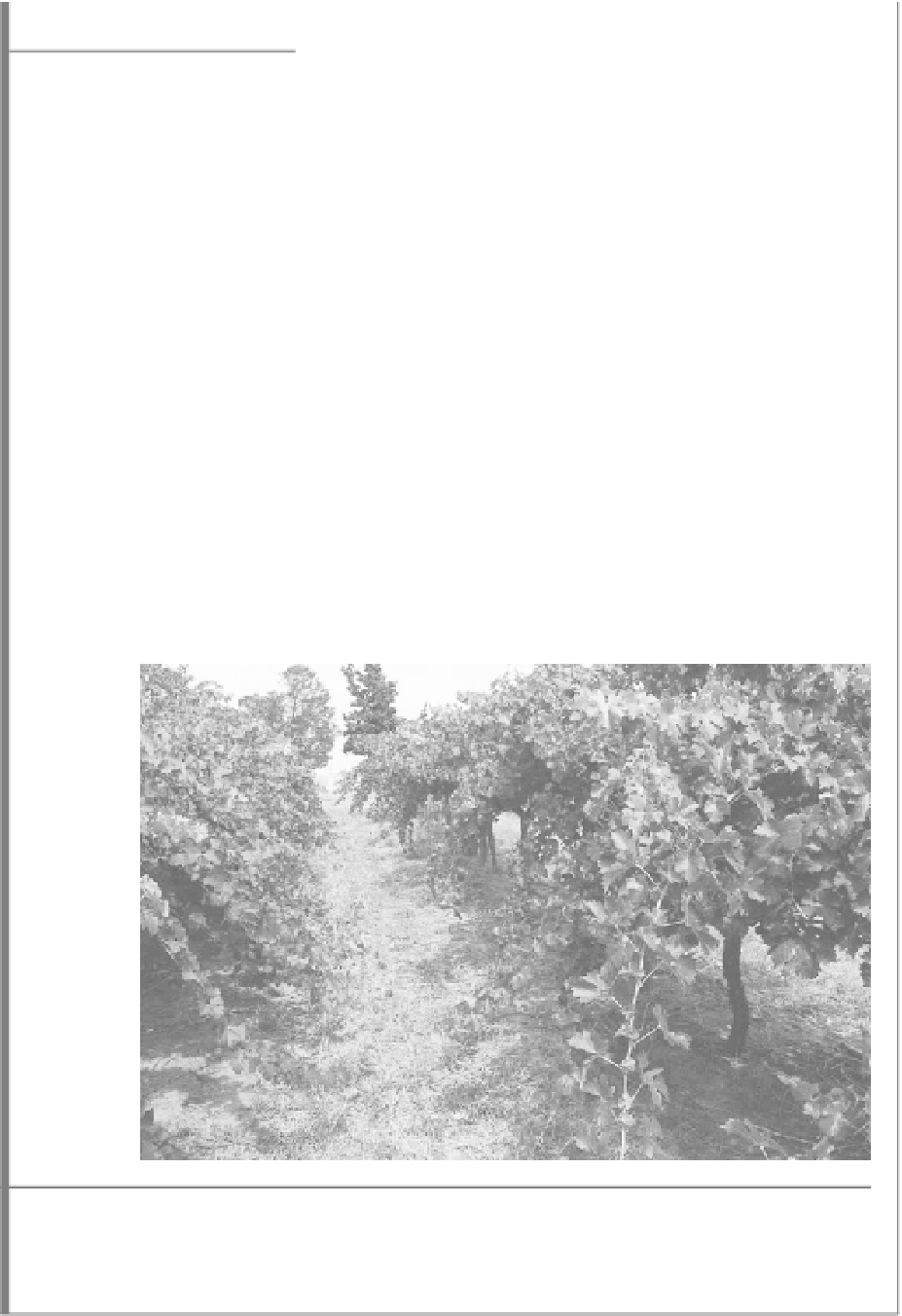Agriculture Reference
In-Depth Information
Box 9.1
Vines in Balance
Balance is achieved when vegetative growth and fruit load are in equilibrium.
Chapters 5 and 6 discuss the condition of “excess vigor” that results from too high
a supply of soil N and/or soil water during the period of rapid vegetative growth.
An example of vines showing excess vigor is shown in figure B9.1.1. The
consequences of excess vigor are overshading of the fruit, slower fruit ripening (a
particular problem in cool-climate vineyards), less fruit color and flavor, and lower
bud fertility the following season. Excess vigor is difficult to control on deep,
naturally fertile soils in high rainfall areas. Practices to control vigor include
trellising that opens up, or divides, the canopy, shoot trimming in early summer,
and leaf removal between fruit set and veraison. These are discussed in detail by
Smart and Robinson (1991). Other practices to control vigor involve the choice of
rootstock (table 7.4), use of grass cover crops (section 7.3.1), the planting density
(section 8.4.2), whether vines are irrigated, and if they are, control of the water
supply at critical stages of growth (section 6.5). An example of vines that have
been managed to control vigor and achieve vine balance is shown in fig. B9.1.2.
Clearly, management practices interact with the soil and the environment to
determine vine balance. To a degree, one factor can substitute for another, such as
a restricted soil water supply reducing vegetative growth thus minimizing the need
for intensive canopy management. The most important outcome of this interaction
is optimum physiological fruit ripening, which is the end result when vines are in
balance (Gladstones 1992).
Figure B9.1.1
Cabernet Sauvignon vines showing excess vigor and overshaded fruit on a fertile, clay
soil at Rutherglen, Australia. Photograph by the author. See color insert.
(continued)

